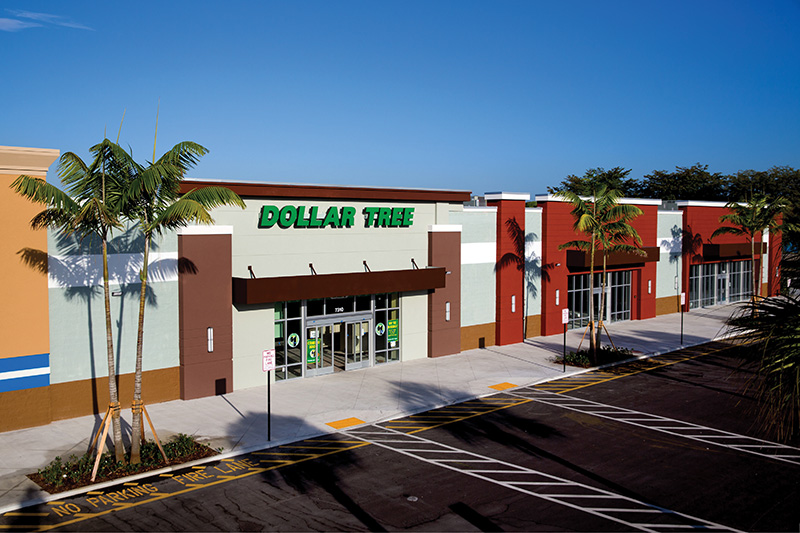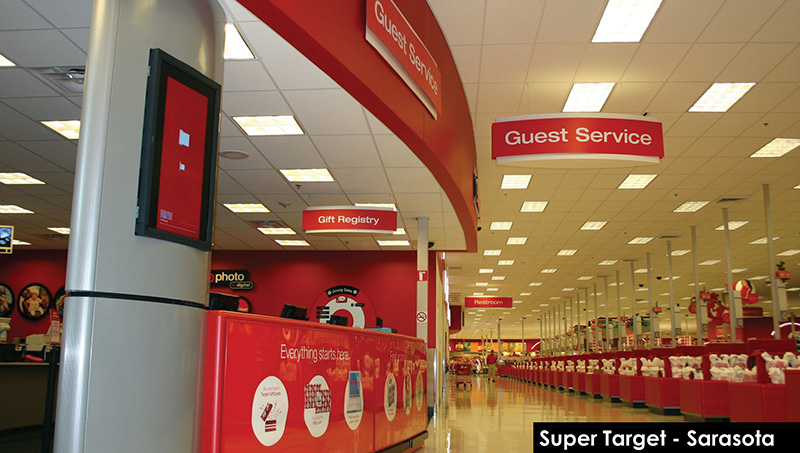Retail construction in a rising market.
By Bob Lipscomb
 As the Great Recession began to wane and retailers nationwide began to recover, new stores and shopping centers started to spring up. Many retailers also began refreshing and remodeling existing buildings, riding new design trends and building innovations. Established retailers and developers reached out to their existing general contractors and asked the ever-important question: “How much will this cost?” Because the retail construction market had been depressed for an extended time, most contractors struggled to know current cost for retail projects. Prior cost data was outdated, and many of the subcontractors and suppliers were still offering a depressed price in order to secure market share.
As the Great Recession began to wane and retailers nationwide began to recover, new stores and shopping centers started to spring up. Many retailers also began refreshing and remodeling existing buildings, riding new design trends and building innovations. Established retailers and developers reached out to their existing general contractors and asked the ever-important question: “How much will this cost?” Because the retail construction market had been depressed for an extended time, most contractors struggled to know current cost for retail projects. Prior cost data was outdated, and many of the subcontractors and suppliers were still offering a depressed price in order to secure market share.
 The days of depressed pricing are over. In the Southeast, in particular, almost all general contractors and subcontractors are at full capacity. The simple facts of supply and demand in the labor markets are a real part of current construction pricing. Other commercial construction markets including industrial, multifamily, education and senior living are also seeing high demand. Therefore, in a rising construction market, knowing current construction cost is imperative to determining long term lease rates.
The days of depressed pricing are over. In the Southeast, in particular, almost all general contractors and subcontractors are at full capacity. The simple facts of supply and demand in the labor markets are a real part of current construction pricing. Other commercial construction markets including industrial, multifamily, education and senior living are also seeing high demand. Therefore, in a rising construction market, knowing current construction cost is imperative to determining long term lease rates.
For the past 4 decades, Williams Company Southeast has been a favored retail contractor for many of the major players in the southeastern U.S. retail market. Retail developers O’Connor Capital, Regency Centers and Pan American Development, to name a few, have relied on our expert pricing at the conceptual phase of a development, to understand how the construction cost fits into the developer’s proforma. National retailers such as Target, Ross Dress for Less, Publix, PetSmart, Staples, IKEA, Dollar Tree, Hobby Lobby and Goodwill have also recognized us for our astute pricing, and have experienced a much higher level of service on their projects.
Early Budgets
Getting the early pricing right at the front end of the project is absolutely key. In addition, it is advantageous to have deep relationships in the subcontractor world that allow you to reach out and get accurate budget numbers for all trades on a project. Spreadsheets should be kept for each individual retailer so that a cost comparison can be made in every trade.
Each retailer has certain items that are unique to its store. Items such as flooring products, ceiling treatments, wall finishes, electrical fixtures and plumbing fixtures all may be different for each individual retailer in a 20-store shopping center. Knowing the minute details of each retailer is the difference between an excellent budget and a guess. Our pre-construction department relies on past experience, detailed historical cost data and a retailer’s current “work letter” to determine an accurate price. Retailers like Ross, Starbucks, PetSmart and Burlington Coat Factory have very specific flooring requirements that all have different costs. Knowing these differences in the early stages makes for a project with few surprises.
Remodels
 Over the past 5 years many of the largest retailers have gone back into their stores to refresh and repurpose their stores. Target is a good example of a large retailer that has adapted its stores to a changing retail environment. The Super Target stores were introduced over a decade ago to provide Target shoppers with a full grocery store, along with the Target soft and hard lines that shoppers were accustomed to. After Target understood what the high volume items were in the grocery section, Target inserted a smaller grocery section into regular Target stores to take advantage of these high volume items.
Over the past 5 years many of the largest retailers have gone back into their stores to refresh and repurpose their stores. Target is a good example of a large retailer that has adapted its stores to a changing retail environment. The Super Target stores were introduced over a decade ago to provide Target shoppers with a full grocery store, along with the Target soft and hard lines that shoppers were accustomed to. After Target understood what the high volume items were in the grocery section, Target inserted a smaller grocery section into regular Target stores to take advantage of these high volume items.
When Target decides to remodel active stores in the Southeast, our pre-construction team dives into the detail so that accurate pricing can be developed for the program. Understanding what can be done in an open and active store is important to the Target brand. Much of the construction work takes place at night, during off hours. During the day, behind attractive barricades and temporary walls, the less noisy work takes place so that shoppers are not distracted by the construction. A superintendent continuously communicates with the store team lead at all times during the renovation. Each morning before the store is open, Target and Williams Company walk the store for cleanliness and accessibility. A well-defined game plan for the day’s activities is set in motion.
 When a major retailer or developer selects a general contractor, price is always a factor. However, many larger and more mature retailers realize that experience matters even more. Trust plays an important part in the decision by a retailer to select a contractor. Knowing that the contractor selected will be working in an open store, with active shoppers, means that safety, cleanliness, noise mitigation and quality will be the difference between a successful project and a failure. Since 1990, we have completed more than 100 new stores for Target along with over 200 open store renovations. During the 27 years of working with Target, our staff and the Target construction team have worked together to determine the most efficient and cost-effective way to build Target’s projects.
When a major retailer or developer selects a general contractor, price is always a factor. However, many larger and more mature retailers realize that experience matters even more. Trust plays an important part in the decision by a retailer to select a contractor. Knowing that the contractor selected will be working in an open store, with active shoppers, means that safety, cleanliness, noise mitigation and quality will be the difference between a successful project and a failure. Since 1990, we have completed more than 100 new stores for Target along with over 200 open store renovations. During the 27 years of working with Target, our staff and the Target construction team have worked together to determine the most efficient and cost-effective way to build Target’s projects.
Current Cost
Back to the question: “How much will it cost?” In the Florida retail construction market, overall building cost for projects has risen 15% to 18% since 2014. That’s a 4% to 6% per year increase per year for a 3-year period. The current trends for 2017 appear to be in the 3% to 4% range, so some leveling off can be anticipated. The primary driver for these increases is the increase in labor cost. Back before the Great Recession, there were 750,000 trade workers in Florida and at the bottom of the market over half of these workers had left Florida. Even after the Florida construction market recovered, the state has yet to see the trade worker number return to previous levels. Labor shortages are a reality in today’s market.
Hiring a General Contractor
In a rising construction market, retailers and developers should select established general contractors that have a deep resume in retail construction. This experience will lend itself to better early budgeting, knowledge of the various retailer’s specific requirements, better relationships with known subcontractors and, most of all, a smooth and painless project.
— Bob Lipscomb, CEO of Williams Company Southeast, has been with Orlando, Florida-based Williams Company for 29 years. Established in 1920, Williams Company specializes in retail, commercial, industrial and educational projects, and is currently licensed in 15 states from Texas to Maryland. Williams Company Southeast is an operating unit of Williams Company. Email the author at [email protected].
